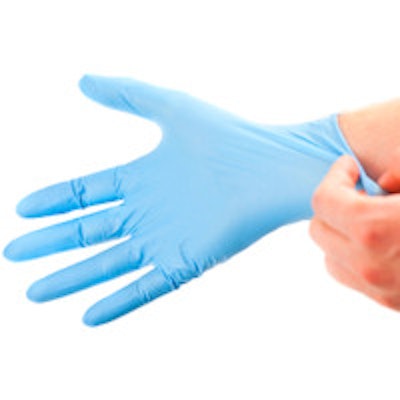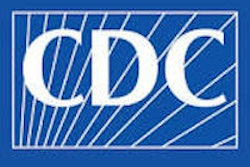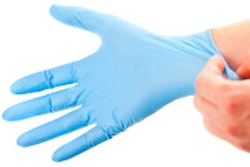
Although glove procedures haven't changed too much over time, the gloves themselves have. With new features and improved materials, now may be the right time to think about how you use gloves in your practice and whether you need to refresh some policies.
 Marie Fluent, DDS, an infection-control consultant, speaker, and active member of OSAP.
Marie Fluent, DDS, an infection-control consultant, speaker, and active member of OSAP.Gloves are an incredibly important part of infection control, because they help protect the patient and provider from potentially harmful microorganisms, according to Marie Fluent, DDS, an infection-control consultant and speaker and also an active member of the Organization for Safety, Asepsis and Prevention (OSAP). Without using the proper gloves at the proper time, the protection that gloves offer may be minimized.
"Gloves should be worn when there is potential for contact with blood, saliva, infectious materials, or mucous membranes -- which is a large portion of the clinical workday," Dr. Fluent wrote on behalf of OSAP in an email interview with DrBicuspid.com. "With proper glove selection, dental personnel may prevent cross contamination, reduce injury risk, protect hands against chemicals used in dentistry, maintain manual dexterity and tactile sense, and yet be comfortable."
Below are five questions to help you get the most out of your gloves.
1. Are you using the right glove at the right time?
Dental professionals are probably very familiar with three types of medical gloves: patient examination gloves, surgeon's gloves, and utility gloves. Each type of glove has an exact purpose and should be used at specific times.
Dr. Fluent offers some details about each:
Patient examination gloves are nonsterile, disposable gloves that come in both latex and synthetic materials. They should be used only for nonsurgical procedures, such as examinations.
Surgeon's gloves are sterile, disposable gloves that "provide excellent tactility, comfort, and dexterity." They should be used for situations in which sterility is required, notably oral surgery.
Utility gloves are heavy-duty gloves that are bulkier, thicker, and more resistant to punctures and chemicals than the others. In addition, they are reusable if they have not been damaged and have been properly disinfected. Heavy-duty utility gloves should be used for such tasks as cleaning contaminated surfaces and instruments and performing housekeeping procedures.
"All medical gloves -- whether manufactured in the U.S. or other countries -- are subject to Food and Drug Administration (FDA) evaluation and clearance. The FDA has identified levels of maximum defects allowed for all medical gloves," Dr. Fluent explained. "Surgeon's gloves are more rigorously regulated by the FDA for sterility. Thus, sterile surgeon's gloves should be used exclusively for oral surgical and other invasive procedures that require a sterile field. Patient examination gloves are appropriate for most other dental procedures."
However, not all available gloves are safe to use with chemicals found in dental settings, Dr. Fluent noted. She recommended consulting the glove's manufacturer to find out if they are dental-compatible and if they have any other limitations.
2. Do your gloves really fit?
“With proper glove selection, dental personnel may prevent cross contamination, reduce injury risk, protect hands against chemicals used in dentistry, maintain manual dexterity and tactile sense, and yet be comfortable.”
Finding the right pair of gloves depends not only on the task but also on the individual. Gloves come in a variety of sizes and materials to help you find a glove that fits -- well -- like a glove.
First, it is important to get the right size. It may be hard to grasp objects when gloves are too loose, but gloves that are too small "are more likely to tear, and be uncomfortable or interfere with manual dexterity and cause hand fatigue," according to Dr. Fluent.
It may take a while to find a "Goldilocks" fit for your hand that is neither too small nor too large in any place. Luckily, gloves come in sizes from extra-small to extra-large, and certain features vary from manufacturer to manufacturer.
"Not all glove measurements from glove manufactures are created equal. For instance, a medium-sized glove from one manufacturer may differ from other (finger length may be longer, palm width may be more narrow, etc.)," Dr. Fluent wrote. "If dental personnel are having difficulty with gloves, a different brand in a similar size may provide an excellent fit."
Gloves today also have extra features that may make them fit even better on hands and within the practice. Dr. Fluent lists some examples:
- Hand-specific patient examination gloves for a better fit and less hand fatigue
- Powdered gloves to prevent them from sticking together
- Gloves with textured fingertips for improved grasp
- Neoprene gloves with bold color for organizational purposes, such as color coordinating sizes
3. Should you go synthetic?
While latex gloves have historically been the "gold standard," according to Dr. Fluent, many dentists are switching to entirely latex-free offices because of rising costs and to prevent possibly severe allergic reactions to the material. This includes switching from latex gloves to ones made of synthetic material.
"Unfortunately, the increased use of gloves has been accompanied by increased reports of allergic and nonallergic reactions," Dr. Fluent stated. "Latex allergic reactions may affect both clinical personnel and patients."
The two latex-free alternatives are nitrile and neoprene gloves. Although synthetic gloves may have been bulky, stiff, and more easily torn in the past, they are now more flexible, thinner, and stronger than ever before, she noted.
Specifically, nitrile has become more popular recently because of excellent resistance to tears and chemicals. Neoprene gloves, on the other hand, are thin with excellent tactile sense and stretch, much like latex.
4. Do you know how to prevent glove damage?
It is important to check gloves, especially reusable utility gloves, for signs of deterioration, such as tears and cracks, according to Dr. Fluent. Any gloves with defects should be immediately thrown out.
The dental team can also take steps to help prevent damage to gloves. These include the following:
- Thoroughly drying hands after using an alcohol hand rub
- Taking off hand jewelry
- Keeping fingernails short and avoiding artificial nails
- Using only water-based hand lotions
- Never washing, disinfecting, or sterilizing patient examination or surgical gloves, which can lead to micropunctures
If gloves do get damaged, simply remove the gloves as soon as possible, wash hands, and put on a fresh pair.
5. When was the last time you reviewed glove policies?
Although the basics of proper glove usage are the same -- hand hygiene before and after gloves and if gloves are compromised during care -- sometimes team members forget details over time. The Centers for Disease Control and Prevention (CDC) has specific recommendations, which can be found on its website, Dr. Fluent noted.
She also recommended the following for professionals wanting to learn more or refresh their knowledge:
- The CDC Guidelines for Infection Control in Dental Health-Care Settings -- 2003
- OSAP's free, online training course From Policy to Practice: OSAP's Interactive Guide to the CDC guidelines
- OSAP's workbook "CDC Guidelines: From Policy to Practice"
- OSAP's video-based Interact Training System on Occupational Safety and Health Administration (OSHA) and CDC Guidelines
- Cottone's Practical Infection Control in Dentistry (3rd edition) by Molinari and Harte
- Infection Control and Management of Hazardous Materials for the Dental Team (5th edition) by Miller



















